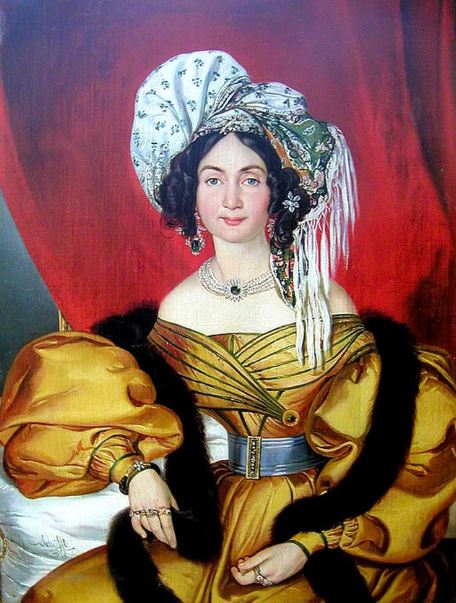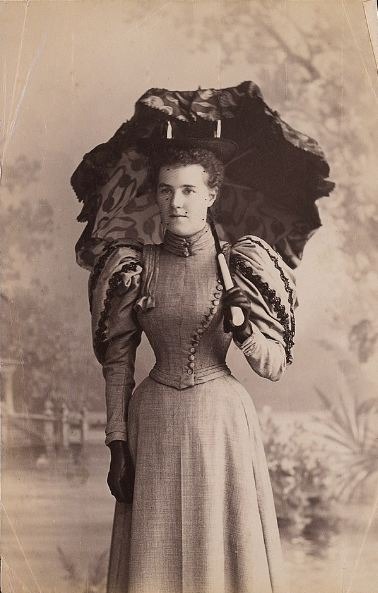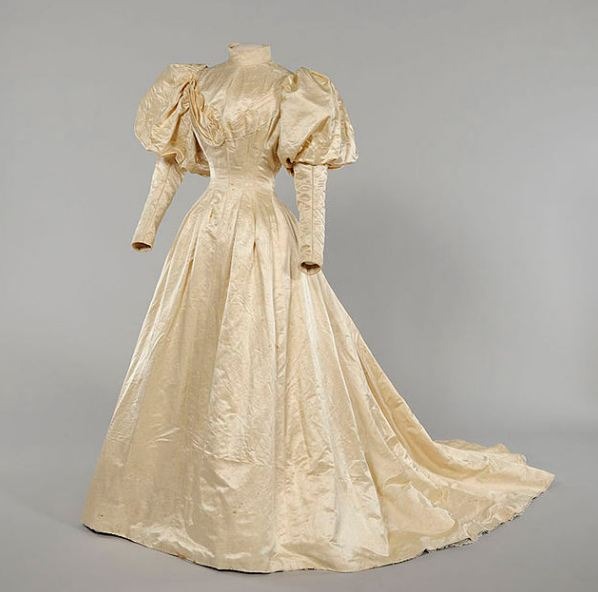One of the most distinctive elements of 1800s fashion is the gigot sleeve. These puffy sleeves might look preposterous today, but at the time they were all the rage.
The 1820s to the 1830s paved the way for the distinctive gigot sleeves. They were also referred to as “leg of mutton” sleeves because the word “gigot” is a French word for “leg of mutton,” or the back leg of a lamb or sheep.
Gigot sleeves were part of women’s gowns with large full conical skirts and narrow waists. They started slightly off the shoulder and puffed out before diminishing towards the lower part of the arm, smoothly fitting the wrist. When combined with a V-neck dress and a full skirt, gigot sleeves made the waist look narrower than it really was.
The reason behind the popularity of these extravagantly puffy sleeves was during the 1820s the fashion style transitioned from the Empire silhouettes to Romantic silhouettes. This meant that the dress waistlines were now moving downwards gradually. By 1825 it was just a little above the natural waistline. To balance the silhouette, the style of the sleeves had to change too then. The sleeves kept getting larger and puffier as the gored skirts became shorter and wider.
Many famous and well-known women across Europe and America were seen wearing gigot sleeves. American women included Elizabeth Patterson, the first wife of Jérôme Bonaparte, younger brother of Napoleon Bonaparte, and Maria D. Mayo wife of Winfield Scott, American military commander, and political candidate, Winfield Scott). The French socialite Madame Récamier or the Princess Sophie of Sweden and many others donned dresses with gigot sleeves to make a fashion statement in the 1800s. The royal women and princesses from this time period are often seen wearing gigot sleeves in their portraits.
By the time Queen Victoria was crowned in 1837, the gigot sleeves or leg of mutton sleeves had gone out of vogue completely. For at least the next fifty years gigot sleeves remained out of sight in the fashion world.

The gigot sleeve made a comeback in the 1890s, but it took a slightly different shape. Unlike the 1890s gigot sleeve, the 1820s to 1830s gigot sleeve did not start directly where the sleeve and the shoulder of the dress met. Instead, the earlier gigot sleeve started at the top of the arm, giving the wearer an illusion of sloped shoulders, which were some of the most desirable physical traits in women way back then. Another desirable physical trail was the hourglass figure which was “the” goal of every woman. Because the gigot sleeves gave an illusion of wider shoulders, they made the waist look smaller and narrower. This made dresses with gigot sleeves a popular choice among the women of the late 1890s.
Designing and stitching the perfect flowy gigot sleeves was also an art. Using a lot of fabric to create poofy sleeves will not give you the perfect gigot sleeves. The cutting of the sleeves was an important skill. They had to be cut on the bias of the fabric. This means that if you have a square fabric out of which you want to cut gigot sleeves, first observe its threads. The threads will be going two ways: horizontally (also called the weft) and vertically (also called the warp). To cut on the bias, you will have to place the sleeve pattern diagonally on the piece of fabric. This way the sleeve will be made diagonally across the horizontal and vertical threads. A sleeve cut on the bias is flowier with softer curves because the fabric has more movement and stretch.
Well, if you ask us, puffed-up gigot sleeves may be stylish and showy – but like many other forms of fashion, the gigot sleeves were not practical. The wearer really had to mind the sleeves all the time while she was wearing a dress with these features. She had to keep each of the sleeve’s volume up. In 1827, the upper portion of the sleeve was sometimes used with a whalebone frame (sewn into the sleeve) to distend it and make it bigger. Other ways to make the upper sleeve look plumper include a stiff lining on the inside of the sleeve to help maintain the volume. For an even bigger sleeve, padding and even hoops were used to maintain the shape and the size of the gigot sleeve.

As a result, all these “enhancements” made it difficult for women to move or use their arms. The ballooned-up sleeves made it even harder for these poor ladies to enter narrow doorways. Little wonder that gigot sleeves became a subject of ridicule from fashion critics at the time, who nicknamed them “imbecile sleeves.” Despite the criticism and mockery, the gigot sleeves persisted for a longer time. Even little boys and girls wore dresses and tops with miniature versions of the gigot sleeves.
Even though it was impractical, gigot sleeves were everywhere. They were not just present in formal evening dresses but also in promenade dresses, seaside costumes, riding habits, walking ensembles, and even on mourning wear. It was the sign of a truly fashionable woman that she could embrace this look effortlessly and gracefully. You can find its many modern variations to this day and age as well.

